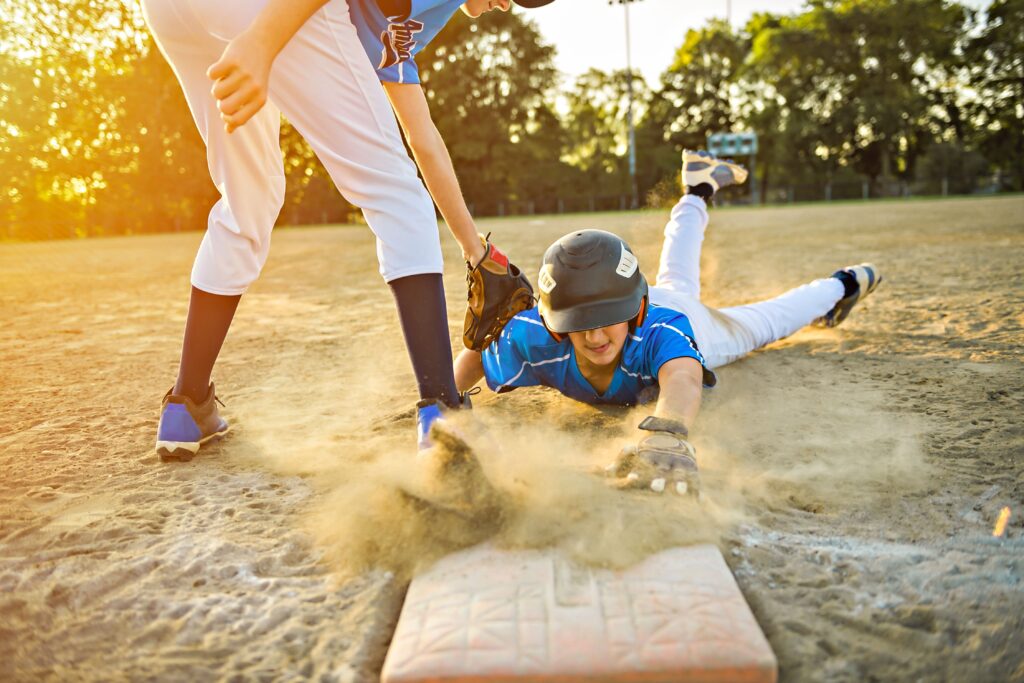You might not realize how simple adjustments can transform senior mobility, making daily activities easier and safer. By implementing home modifications, such as adding grab bars or improving lighting, you can create a more accessible environment. Additionally, incorporating balance exercises and assistive devices plays an essential role in fostering independence. But there's more to the story—understanding the full range of adjustments available can lead to even greater improvements in mobility and overall quality of life. What are the most impactful changes you can make?
Understanding Mobility Challenges
Understanding mobility challenges is vital for improving the quality of life for seniors. As you age, your body undergoes numerous changes that can affect your ability to move freely. Conditions like arthritis, osteoporosis, and muscle weakness can limit your range of motion and make daily activities more difficult. You might find it harder to walk, climb stairs, or even get in and out of chairs. Recognizing these challenges helps you identify the right strategies to enhance your mobility.
It's also important to take into account the psychological aspects of mobility issues. You may feel frustrated or embarrassed by your limitations, which can lead to social withdrawal. It's critical to understand that these feelings are common among seniors facing mobility challenges. Acknowledging these emotions allows you to seek help and support, whether from family, friends, or healthcare professionals.
Additionally, you should be aware that environmental factors can exacerbate mobility issues. Uneven surfaces, poor lighting, and cluttered spaces can all contribute to falls or accidents. By understanding how these elements impact your movement, you can make more informed decisions about your environment and lifestyle.
Finally, staying informed about available resources, such as physical therapy or assistive devices, can empower you to take charge of your mobility. Embracing these options not only helps you move better but also boosts your confidence and independence.
Ultimately, understanding mobility challenges is the first step toward making meaningful changes that enhance your overall well-being.
Home Modifications for Safety
To improve safety and mobility at home, making specific modifications can greatly reduce risks and enhance your independence. Start by evaluating your living space for potential hazards. Remove tripping hazards like loose rugs, clutter, or electrical cords. Opt for non-slip mats in areas prone to moisture, such as the kitchen and bathroom, to provide extra grip.
Consider installing grab bars in the bathroom, near the toilet and shower, to help you maintain balance and prevent falls. A shower chair or a walk-in tub can also make bathing safer and more comfortable.
When it comes to lighting, verify all areas of your home are well-lit. Install brighter bulbs and use night lights in hallways and staircases to guide your way after dark.
If stairs are a challenge, think about adding a stairlift or moving essential items to the main floor. Adding handrails on both sides of the stairs can also provide extra support. You might want to invest in a raised toilet seat to make sitting and standing easier.
Keep frequently used items within easy reach. Use long-handled tools for dressing or picking up objects to minimize bending or stretching.
Finally, secure your home's entry points with ramps instead of stairs to ease access.
Importance of Balance Exercises
Balance exercises are essential for maintaining your stability and preventing falls as you age. As you grow older, your body undergoes changes that can impact your coordination and strength. Incorporating balance exercises into your routine can greatly enhance your ability to move safely and confidently.
These exercises help improve your core strength, which plays a key role in maintaining stability. When your core muscles are strong, you'll find it easier to support your body while standing, walking, or performing daily activities. Engaging in activities like tai chi, yoga, or even simple standing exercises can boost your balance and flexibility.
Moreover, practicing balance exercises can sharpen your proprioception—the sense of how your body is positioned in space. This awareness is crucial for preventing falls, as it allows you to react quickly to changes in your environment. Just a few minutes of balance training each day can make a noticeable difference in your overall stability.
Don't forget that balance exercises aren't just for those who've experienced falls before. Even if you feel steady on your feet, these exercises can help you maintain that confidence and prevent future issues.
It's never too late to start, and the benefits extend beyond just physical stability; they can improve your mental well-being as well.
Assistive Devices Overview
Maneuvering daily life can become challenging as you age, but assistive devices can provide the support you need to maintain your independence. These devices come in various forms, each designed to help you with specific mobility issues. Understanding your options is vital in selecting the right tools for your needs.
Walking aids, like canes and walkers, offer stability and balance. They're especially useful if you find yourself feeling unsteady on your feet. Canes provide support on one side, while walkers offer more thorough assistance with a wider base. You can choose between fixed and folding models, depending on your preferences and lifestyle.
For those who require more substantial support, wheelchairs and mobility scooters can transform mobility. Wheelchairs can be manual or electric, allowing you to choose based on your strength and energy levels. Mobility scooters, on the other hand, are great for longer distances, providing comfort and ease of use.
If you struggle with stairs, consider stairlifts or grab bars. Stairlifts attach to your staircase, providing a safe way to navigate between levels in your home. Grab bars can be installed in bathrooms and other areas to give you something sturdy to hold onto.
Lastly, don't overlook adaptive clothing and footwear. These can make dressing easier and safer, reducing the risk of falls.
Benefits of Physical Therapy
Engaging in physical therapy can greatly enhance your mobility and overall quality of life as you age.
It's not just about recovering from an injury; it's a proactive approach to maintaining and improving your physical abilities. Through tailored exercises and techniques, you can address specific mobility issues, strengthen your muscles, and boost your confidence in daily activities.
Here are some key benefits of physical therapy for seniors:
- Increased Strength: You'll build muscle strength, which is essential for maintaining balance and reducing the risk of falls.
- Improved Flexibility: Regular sessions can enhance your joint flexibility, making it easier to perform everyday tasks without discomfort.
- Pain Management: Physical therapists can provide strategies to manage chronic pain effectively, reducing your reliance on medications.
- Personalized Care: Each program is designed specifically for you, taking into account your unique needs and goals.
- Enhanced Balance and Coordination: You'll work on exercises that improve your balance, helping you feel more secure while moving around.
Nutrition's Role in Mobility
As you age, proper nutrition plays an essential role in maintaining your mobility. It's not just about eating enough; it's about choosing the right foods that fuel your body and support your joints. A balanced diet rich in essential nutrients can help you stay active and flexible.
First, focus on protein. It's important for muscle repair and growth. Include lean meats, fish, eggs, and plant-based sources like beans and lentils in your meals. Strong muscles support your joints, helping you move more freely.
Next, don't forget about healthy fats. Omega-3 fatty acids, found in fish, walnuts, and flaxseeds, can help reduce inflammation in your joints. This can ease discomfort and improve your overall mobility.
Additionally, incorporating healthy fats into your diet can support brain health, which is critical for coordination and balance.
Vitamins and minerals also play a significant role. Calcium and vitamin D are essential for bone strength, while magnesium can help with muscle function. Make sure you're getting plenty of fruits and vegetables, as they provide antioxidants that combat oxidative stress and improve overall health.
Finally, stay hydrated. Dehydration can lead to fatigue and decreased physical performance. Aim to drink plenty of water throughout the day.
Social Engagement and Activity
Maintaining mobility isn't just about nutrition; social engagement and physical activity play a significant role, too. Staying connected with others and participating in activities can greatly enhance your overall well-being.
When you engage socially, you not only strengthen your emotional health but also encourage physical movement, which is essential for maintaining mobility.
Consider incorporating these activities into your routine:
- Join a local club: Whether it's a book club or a gardening group, being part of a community provides motivation and accountability.
- Volunteer: Helping others keeps you active and gives you a sense of purpose. Look for opportunities that require physical involvement, like community clean-ups.
- Participate in group exercises: Classes tailored for seniors, such as Tai Chi or water aerobics, not only improve your strength but also foster friendships.
- Attend social events: Regularly going to gatherings or local events keeps you connected with your peers and encourages you to move around.
- Use technology: Video calls with family or friends can maintain those important connections, reducing feelings of isolation while encouraging you to stay active within your home.
Outdoor Accessibility Solutions
When you're considering outdoor accessibility solutions, think about how pathway design can make a big difference.
Choosing suitable mobility aids is just as important to guarantee safe and easy navigation.
Let's explore how these elements can enhance outdoor experiences for seniors.
Pathway Design Considerations
Creating accessible pathways for seniors involves thoughtful design that prioritizes safety and ease of movement.
To guarantee that pathways are navigable and welcoming, consider the following design elements:
- Smooth Surfaces: Use materials that minimize bumps and cracks, providing a stable surface for walking or using mobility aids.
- Adequate Width: Design pathways wide enough to accommodate walkers or wheelchairs, allowing for safe passage without obstruction.
- Gentle Slopes: Incorporate gradual slopes instead of steep inclines, making it easier for seniors to traverse hills without fatigue.
- Clear Signage: Install signs that are easy to read and understand, helping seniors navigate their environment with confidence.
- Proper Lighting: Ensure pathways are well-lit to enhance visibility, especially during early morning or evening hours.
Suitable Mobility Aids
Seniors' mobility can greatly benefit from the right outdoor accessibility solutions, making it easier to enjoy walks and outdoor activities.
One key option is a sturdy walker or rollator. These devices provide balance and support, allowing you to navigate uneven terrain with confidence. Look for models with larger wheels and built-in seats for added convenience.
Another great choice is a mobility scooter, especially for longer outings. With various styles and sizes available, you can find one that fits your lifestyle and needs. Many scooters are designed for outdoor use, featuring rugged tires and a longer battery life.
If you prefer something lightweight, consider using a cane or a trekking pole. These options enhance stability while being easy to transport.
For those who want extra support without a full mobility aid, a hip belt or harness can be a discreet alternative.
Finally, don't forget about accessories like portable ramps and grab bars to help you access outdoor spaces easily.
Technology for Enhanced Mobility
As you explore ways to enhance mobility, smart mobility devices can be game-changers in your daily life.
These tools, along with wearable health technology, provide real-time feedback and support, making it easier to stay active and safe.
Let's look at how these innovations can empower you to move freely and confidently.
Smart Mobility Devices
Smart mobility devices are revolutionizing the way seniors stay active and independent. These innovative tools enhance mobility and provide the support needed to navigate daily life with confidence.
With the right devices, you can maintain your freedom and engage in activities you love.
Here are some smart mobility devices that can make a significant difference:
- Electric scooters: These provide a comfortable way to travel longer distances without exhausting yourself.
- Mobility walkers: Equipped with features like built-in seats and hand brakes, they're perfect for both support and rest.
- Smart canes: With added technology, these canes can alert caregivers if you fall or need assistance.
- Personal mobility vehicles: Compact and easy to use, they're great for running errands or enjoying leisurely outings.
- Stairlifts: If your home has stairs, installing a stairlift can help you move between floors safely.
Wearable Health Technology
Wearable health technology is transforming how you can monitor your well-being while enhancing your mobility. Devices like smartwatches and fitness trackers allow you to keep track of crucial signs, physical activity, and even sleep patterns. By wearing these gadgets, you gain real-time insights into your health, empowering you to make informed decisions about your daily routines.
For seniors, this technology can be especially beneficial. Many wearables come equipped with fall detection features, alerting caregivers or family members when you need help. This added layer of safety can markedly boost your confidence when moving around, knowing that support is just a tap away.
Additionally, these devices often include reminders for medication, hydration, or exercise, helping you stay on top of your health goals. You can set personalized activity targets and receive encouragement to meet them, which can lead to improved strength and balance—key factors in maintaining mobility.
Ultimately, integrating wearable health technology into your daily life can enhance not just your mobility but your overall quality of life. Embrace this innovation, and take charge of your health like never before!
Encouraging Independence in Seniors
Encouraging independence in seniors is essential for their mental and physical well-being, as it fosters a sense of purpose and confidence. When seniors feel empowered to make their own choices, it can greatly improve their quality of life. You can help promote this independence in various ways.
One effective method is to create a safe living environment that allows seniors to move freely. This includes removing obstacles and ensuring proper lighting.
Additionally, consider these strategies to encourage independence:
- Promote decision-making: Allow seniors to choose their daily activities, meals, and social engagements. This enhances their autonomy and boosts their self-esteem.
- Encourage physical activity: Engage them in exercises that suit their ability levels, such as walking, stretching, or chair yoga. Regular movement helps maintain mobility and independence.
- Introduce assistive devices: Tools like grab bars, walkers, or canes can provide the support they need without making them feel dependent on others.
- Facilitate social connections: Encourage participation in community events, clubs, or classes. Staying socially active can improve their mood and sense of belonging.
- Set achievable goals: Help them set small, manageable goals, like completing a household chore or going for a walk. Celebrating these accomplishments reinforces their capability.
Conclusion
By making effective adjustments to your home and daily routines, you can greatly boost your mobility and independence. Simple changes like adding grab bars and improving lighting can enhance safety, while balance exercises and assistive devices keep you active. Embracing social activities and outdoor accessibility solutions fosters connection and confidence. Remember, every small step you take toward enhancing your environment contributes to a more mobile and fulfilling life. Stay engaged, and keep moving forward!



